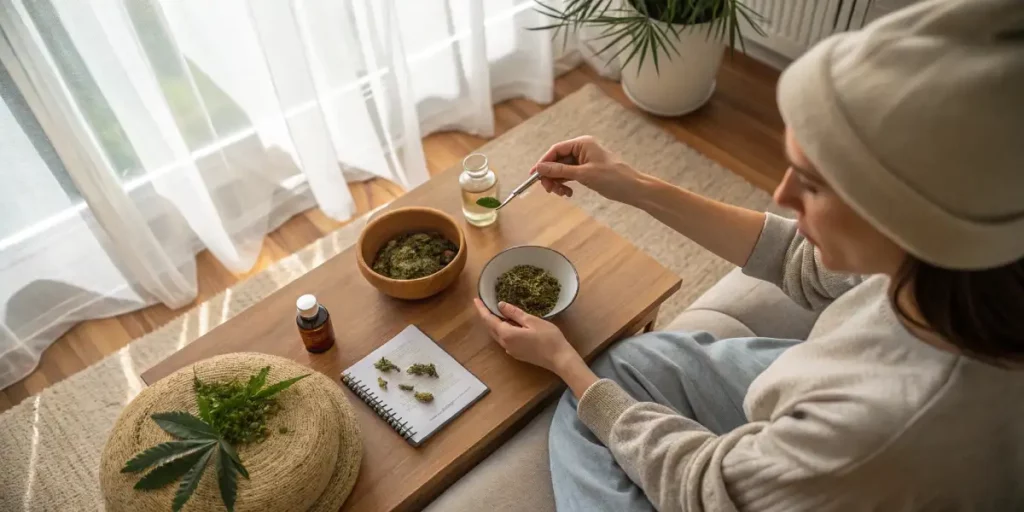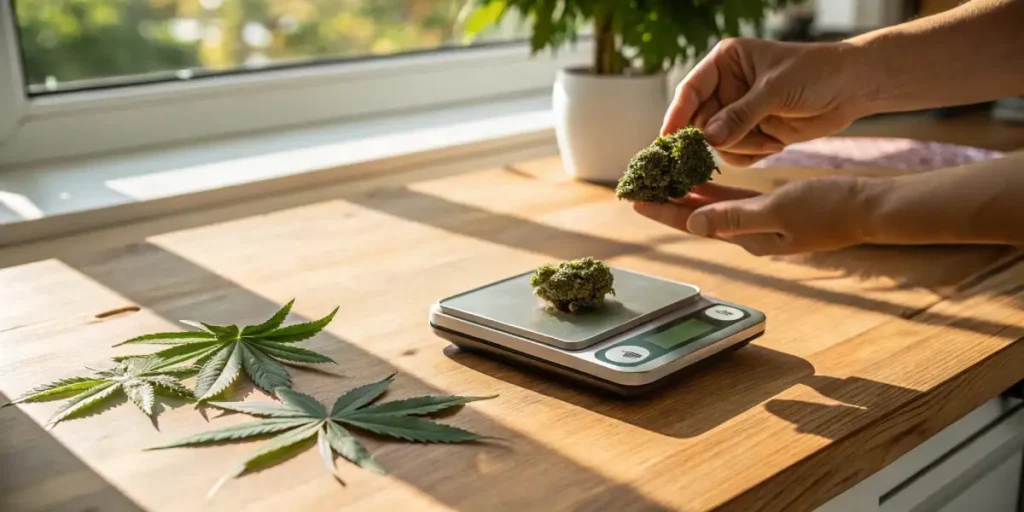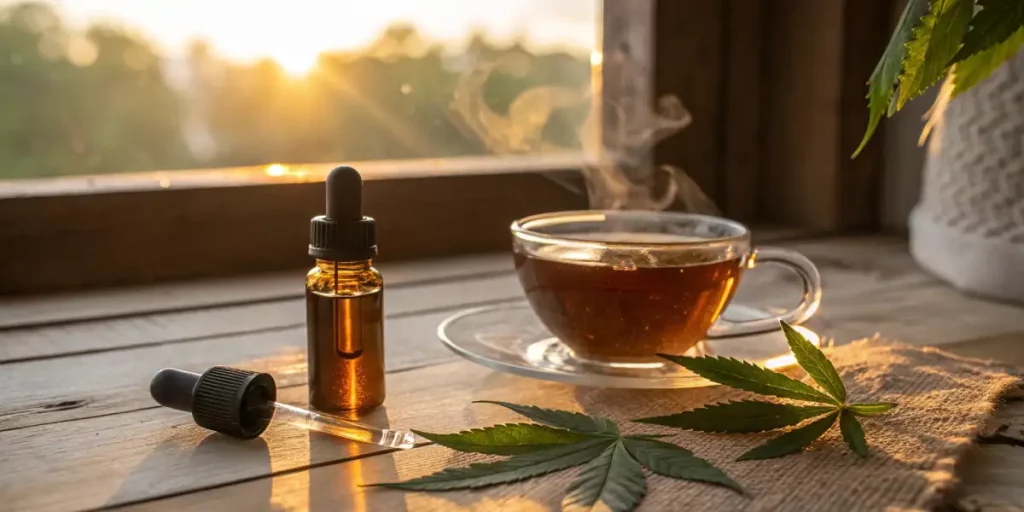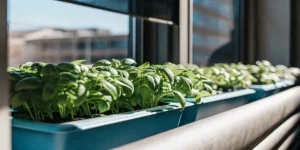Microdosing weed is becoming a popular way to enjoy the benefits of cannabis without getting too high. It involves taking small, controlled doses of cannabis to achieve a subtle effect. For those wondering how to microdose weed, this method can be ideal to experience the plant’s benefits without the intense psychoactive effects.
For first-time cannabis seed buyers and experienced growers alike, knowing how to microdose weed can open up new ways to consume cannabis. It’s about finding the sweet spot where you feel relaxed, focused, or relieved from anxiety without going overboard. It can be as simple as using a tiny amount of a favorite strain from Global Green Genetics, like Blue Dream, and gradually adjusting your dose.
Microdosing weed for anxiety relief is often a primary reason people turn to this method. The idea is to reap the therapeutic benefits of cannabis without feeling overwhelmed. It’s a method that can also promote improved focus and clarity, making it a versatile choice for many users.
Best Practices for Microdosing Cannabis
Starting with the best practices for microdosing cannabis is crucial. Begin by selecting the right strain. Different strains have various levels of THC and CBD, which can affect your experience. A strain like Northern Lights from Global Green Geneticst could be a good choice due to its calming effects.
Once you have your strain, decide on the form of cannabis you want to use. Options include dried flower, edibles, tinctures, or oils. Each form has a different onset time and duration, so pick one that fits your lifestyle and preferences. Remember, the goal is to take enough to feel a slight change but not so much that you lose control.
Another key element in the best practices for microdosing cannabis is to establish a routine. Consistency can help your body acclimate to small doses, leading to more predictable outcomes. This routine can also assist in identifying which doses and strains work best for your specific needs and lifestyle.
Consider your environment when microdosing. A calm, familiar setting can enhance your experience, making it easier to notice the subtle effects. This is particularly important for beginners who are still learning how to microdose weed effectively and safely.
How to microdose weed safely: a beginner’s guide
Safety is a top concern when learning how to start microdosing marijuana safely. Begin with the lowest possible dose, often just a single puff from a joint or a tiny piece of an edible. Wait at least an hour to gauge the effects before considering more. Patience is key.
Keep a journal to track your doses and effects. Note how much you took, the strain, and how you felt after. This record will help you find your ideal dose more quickly and safely. Adjustments can be made based on what works or doesn’t work for you.
It’s also important to educate yourself on the potential interactions between cannabis and other medications you may be taking. Consulting with a healthcare professional can provide insights into how to start microdosing marijuana safely, especially if you have underlying health conditions.
Microdosing weed for anxiety relief is often sought after, but it’s crucial to approach this goal with caution. Starting with smaller doses and gradually increasing allows you to find a balance that alleviates anxiety without leading to unwanted side effects.

Benefits of Microdosing THC for Beginners
Many beginners find the benefits of microdosing THC appealing. Unlike taking larger doses, microdosing can provide relief from anxiety and stress without the overwhelming high. It allows new users to get accustomed to the effects of THC gradually.
Another benefit is enhanced focus. Small doses of THC can stimulate creativity and improve concentration. This can be particularly useful for tasks requiring attention to detail or brainstorming new ideas. You might find it easier to tackle your to-do list after a tiny dose.
For beginners, the benefits of microdosing THC also include an introduction to the diverse range of cannabis strains and their effects. This gradual exposure can help new users make more informed choices about what strains and dosages are most beneficial for them.
Additionally, microdosing can offer a way to explore the therapeutic benefits of cannabis without the stigma often associated with higher doses. As society becomes more open to cannabis use, knowing how to microdose weed can be empowering for those looking to integrate it into their wellness routines.
How to microdose weed for improved focus
Improved focus is one of the notable advantages of microdosing cannabis. Small amounts of THC can sharpen your attention, making it easier to concentrate on tasks that require mental clarity. This can be especially beneficial for those with demanding workloads or studying.
Choosing the right strain is important here too. A strain like Jack Herer from Global Green Genetics is known for its ability to enhance mental sharpness without the heavy sedative effects. It’s a favorite among those looking to stay productive and alert.
Microdosing cannabis for improved focus can be particularly effective when combined with other cognitive-enhancing activities. Techniques such as mindfulness meditation or brief periods of physical exercise can further amplify the focusing effects of microdosing.
It’s also helpful to schedule your microdosing sessions during parts of the day when you need the most mental agility. This strategic approach ensures that you can maximize the benefits of microdosing THC for beginners and experienced users alike.

FAQs of how to microdose weed
What is the ideal starting dose for microdosing weed?
The ideal starting dose for microdosing weed is typically very low. Beginners might start with as little as 1-2 milligrams of THC. This translates to a single puff of a joint or a tiny nibble of an edible. The key is to start small and gradually increase if needed.
It’s important to note that everyone’s tolerance levels are different. What works for one person might not be effective for another, so it’s crucial to pay attention to your body’s responses. Always start with the smallest possible dose and work your way up slowly.
Keeping a detailed journal can help you track the effects of your starting doses. Documenting how you feel both physically and mentally can provide valuable insights, guiding you in refining your approach to how to microdose weed for optimal results.
Remember, the goal is to find a dose that provides the benefits of microdosing THC for beginners, such as anxiety relief and focus, without crossing into an overwhelming experience. Your ideal dose is the one that aligns with your personal wellness objectives.
How to microdose weed vs traditional methods: what’s the difference?
Microdosing weed differs significantly from traditional consumption methods. While smoking a full joint or taking a large edible can result in strong psychoactive effects, microdosing aims for a subtle impact. It’s about achieving the desired benefits without the intense high.
For many, this means enjoying the therapeutic effects of cannabis, such as relaxation and anxiety relief, without the risk of feeling overwhelmed. It’s a more controlled way of consuming cannabis, allowing for more precise management of your experience.
Another comparison lies in the predictability of effects. Microdosing typically results in more consistent and manageable outcomes, making it an appealing choice for those who use cannabis for its therapeutic potential. It’s a way to embrace cannabis without the unpredictability of larger doses.
In contrast to traditional methods, microdosing emphasizes the importance of precision and mindfulness. By focusing on how to microdose weed effectively, users can tailor their experiences to suit their unique preferences and needs.
Can microdosing cannabis help with anxiety relief?
Yes, microdosing cannabis can be beneficial for anxiety relief. By taking small amounts, many users find that they can reduce anxiety without experiencing the paranoia or panic that sometimes accompanies higher doses of THC. It provides a gentle calming effect.
For those dealing with anxiety, it’s important to choose strains known for their calming properties. Strains like Northern Lights can be particularly effective. Always pay attention to how your body reacts and adjust your dosage accordingly to maintain a sense of calm.
Microdosing weed for anxiety relief is not just about reducing symptoms but also about enhancing overall well-being. By incorporating this practice into their routine, individuals can experience a more balanced emotional state throughout the day.
It’s also beneficial to integrate other anxiety-reducing practices, such as yoga or deep-breathing exercises, alongside microdosing. This holistic approach can amplify the calming effects, providing a comprehensive strategy for managing anxiety.
What are the potential downsides of microdosing marijuana?
While microdosing marijuana has many benefits, there can be downsides. Some people may not feel any effects at all with such small doses, which can lead to frustration. Additionally, it may take some time to find the right dosage and strain that works for you.
Another potential downside is the need for precision. Tracking doses and effects requires effort and attention. However, with practice, this process becomes easier and can lead to a more rewarding cannabis experience.
There’s also the challenge of finding reliable information and quality products. Not all cannabis products are created equal, and choosing the right ones is crucial for a successful microdosing experience. Research and recommendations can guide these choices.
Despite the potential downsides, many find the effort worthwhile, as the benefits of microdosing THC for beginners and experienced users alike can far outweigh the initial challenges. Persistence and patience are key to a successful microdosing journey.
How should I track my progress while microdosing?
Tracking progress while microdosing is essential for finding the optimal dose. Start a journal where you record the strain, dosage, time of consumption, and your subsequent feelings. This data will help you make informed adjustments to your routine. For high-quality strains ideal for microdosing, you can explore CR+ to find premium genetics that suit your needs.
Over time, patterns will emerge that highlight what works best for you. Whether it’s a specific strain or time of day, having a record can guide your future microdosing sessions. It’s a personalized approach to cannabis consumption that prioritizes your unique needs.
Consider using digital tools or apps designed for cannabis tracking. These can offer additional insights and analytics, helping you refine your approach to microdosing cannabis for improved focus or anxiety relief.
Regularly reviewing your journal entries can also motivate you to stay consistent with your microdosing practice. Seeing the positive changes in your mental clarity, mood, or anxiety levels can reinforce the benefits of how to microdose weed effectively.





